Do you like improvising, going with the flow, and planning your adventures based on how you feel? An unexpected trip to Cusco is the perfect opportunity for an exciting experience, allowing you to explore breathtaking landscapes and discover the magic of the Andes with every step.
If you dream of reaching Machu Picchu through ancient routes, surrounded by towering mountains and vibrant nature, keep in mind that the most popular trails, such as the Inca Trail and Salkantay, tend to sell out quickly. But don’t worry—many other equally spectacular options will let you enjoy a unique adventure, far from the crowds and with stunning scenery that will leave you in awe.
In this article, we present some of the best alternative routes to reach the Inca citadel, each with its own charm and challenge. Find your ideal route and embark on an unforgettable journey!
- Breathtaking Routes to Machu Picchu
- Inca Jungle: Adventure and Adrenaline
- Inca Quarry: History and Ancestral Trails
- Lares: The Andes in Their Purest Form
- Ancascocha: Challenge and Natural Beauty
- Huchuy Qosqo: A treasure of the Incas.
- Choquequirao: The Hidden Jewel
- Tips for Choosing the Best Alternative
- Frequently Asked Questions About Alternative Routes
- Are the alternative routes more difficult or dangerous?
- Which is the easiest route to reach Machu Picchu by trek?
- Which routes have fewer tourists?
- What is the best time to do an alternative trek?
- Can I do an alternative route if I’m not acclimated?
- Which is the best alternative route to Machu Picchu for an authentic cultural experience?
- Which alternative route to Machu Picchu offers the most adventure and extreme sports?
- How much time is needed to complete an alternative route to Machu Picchu?
- Why choose an alternative route instead of the Classic Inca Trail?
- ¡Start your Trip!
- You Might Be Interested In:
Breathtaking Routes to Machu Picchu
The Inca Trail and the Salkantay Trail are two of the most famous hiking routes to Machu Picchu, making them highly sought after. The Inca Trail has a daily limit of 500 people, including guides and porters, which means spots fill up quickly. On the other hand, the Salkantay Trail, while not having visitor restrictions, also has a limited number of accommodations available, especially during peak season.
If you tried to book and couldn’t find availability, don’t worry: There are alternative routes. Cusco offers numerous trails that are just as spectacular, allowing you to experience the beauty of the Andes and uniquely reach the Inca citadel.
Salkantay Trekking is committed to providing you with the perfect travel experience, which is why we offer a wide variety of options tailored to you. Below, we present our favorite routes to Machu Picchu with open availability.
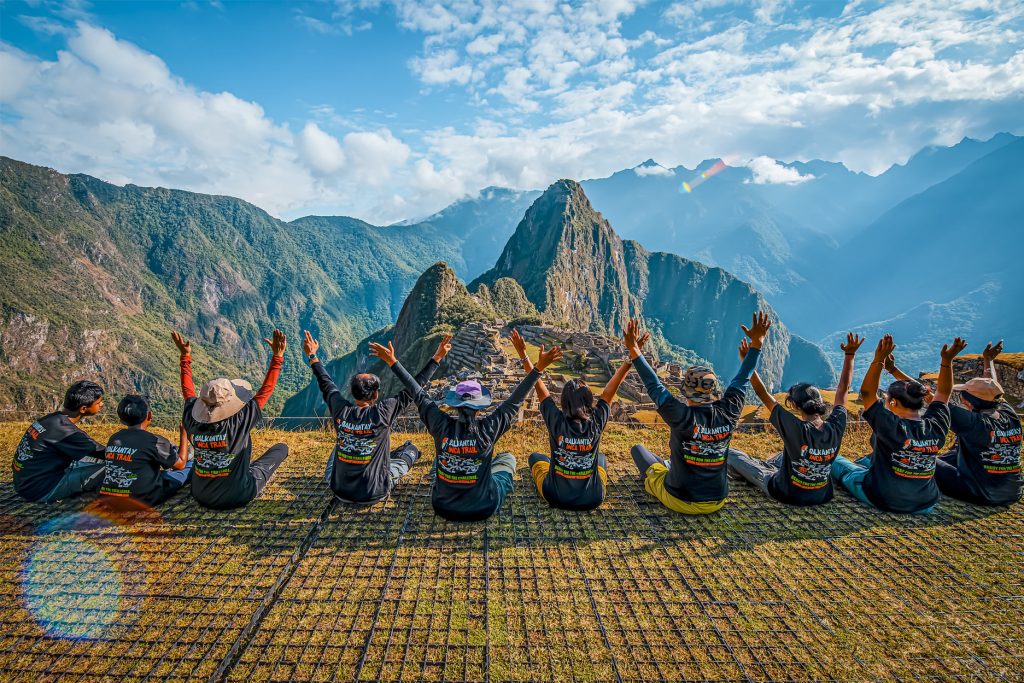
Inca Jungle: Adventure and Adrenaline
If you’re a true adventure lover, this route is perfect for you. The Inca Jungle Trail is an exciting alternative packed with activities that will awaken unique sensations. This route combines extreme sports in the wild landscapes of the Andean mountains and jungle.
As you descend by bike, you’ll notice the shift in climate and temperature until you reach the starting point of the Amazon jungle in Cusco. Here, you’ll witness the power of water while rafting through the region’s mighty rivers, letting the current guide you through a breathtaking natural setting. This adventure will allow you to discover the incredible flora and fauna of the Andean tropical forest as you immerse yourself in a one-of-a-kind environment. If you’re looking to boost your adrenaline, dare to go zip-lining and enjoy a spectacular view of the landscape, feeling like a condor soaring over the majestic Andes.
A World of Sensations: Dare to Challenge Your Skills! This route will put you to the test and make you feel in harmony with your surroundings. The wind on your face, the sound of the water, and a deep connection with nature… An experience you won’t forget.
To cap off the adventure, you will spend a day exploring the amazing Machu Picchu and learning about the fascinating history of the Incas. You will marvel at its monumental architecture, perched atop a mountain. Close your eyes for a moment and travel back in time, imagining what life was like in this sacred city, where every stone tells a story of grandeur and harmony.
Description of the route
On the Classic Inca Jungle Trail, you’ll never get bored. Over four days, you’ll take part in different activities and hike along trails with breathtaking landscapes, leading you to impressive Inca archaeological sites full of history until you finally reach Machu Picchu.
Day 1: Go Mountain Biking and Rafting in the Waters of the Vilcanota River
The adventure begins at Abra Málaga, where you’ll descend by bike from the snowy peaks down into the jungle. Then, you’ll have the chance to go rafting on the Vilcanota River (Class III and III+), an exhilarating experience in the heart of nature. We’ll provide all the safety equipment so you can enjoy it without worries.
| Difficulty Level | Moderate |
| Distance by Bike | 55 km / 34.18 miles |
| Time by Bike | 3 hours approximately |
| Rafting Distance | 9 km / 5.59 miles |
| Rafting Time | 1 hour approximately |
| Rafting Category | III y III + |
| Initial Altitude | 4,350 m / 14,272 feet |
| Minimum Altitude | 1,200 m / 3,937 feet |
| Maximum Altitude | 4,350 m / 14,272 feet |
IMPORTANT NOTE: Rafting on the river is only available from April to December. During the rainy season, the water flow increases significantly, making the current too strong, and for safety reasons, it is not recommended.
Day 2: Hike Inca Trails, Glide on a Zip Line, and Relax in the Cocalmayo Hot Springs.
You’ll hike along ancient Inca trails surrounded by lush vegetation until you reach Santa Teresa, where you’ll discover the Qhapaq Ñan road system. If you’re up for more excitement, try zip-lining and enjoy breathtaking panoramic views. Then, unwind in the Cocalmayo hot springs and rest in our exclusive campsites Super Jungle Domes, where luxury meets nature.
| Difficulty | Moderate |
| Hiking Distance | 7 km / 4.35 miles |
| Hiking Duration | 4 hours |
| Minimum Altitude | 1,200 m / 3,937 feet |
| Maximum Altitude | 2,000 m / 6,562 feet |
Day 3: Taste the Coffee of the Jungle, Visit Llactapata, and See Machu Picchu from Afar.
You will continue your adventure by walking along a section of the original Inca Trail, entering the dense jungle. You will visit a local family’s farm to taste Peruvian coffee, and climb up to the archaeological site of Llactapata, an ancient Inca citadel and control center, to see Machu Picchu in the distance. After lunch, you will hike down to Aguas Calientes, the town of Machu Picchu.
| Difficulty | Challenging |
| Hiking Distance | 25 km / 15.53 miles |
| Hiking Duration | 8 a 9 hours |
| Minimum Altitude | 1,800 m / 5,906 feet |
| Maximum Altitude | 2.800 m / 9,186 feet |
Day 4: Explore the Wonder of the World, Machu Picchu.
The journey culminates with the long-awaited arrival at Machu Picchu, where you’ll explore the iconic Inca citadel and learn about its fascinating history. This trek is perfect for those looking for a mix of adventure, nature, and culture in one unforgettable trip.
| Difficulty | Easy – Moderate (depends on additional activities) |
| Hiking Duration | 2 to 5 hours (depends on additional activities) |
| Altitude of the Machu Picchu Citadel | 2,430 m / 7,972 feet |
| Optional Activities (Machu Picchu Mountains) | Moderate to Challenging (2-4 hours) |
| Maximum Altitude of Machu Picchu Mountain | 3,000 m / 9,843 feet |
| Maximum Altitude of Huayna Picchu Mountain | 2,720 m / 8,924 feet |
| Maximum Altitude of Huchuy Picchu Mountain | 2,497 m / 8,192 feet |
| Minimum Altitude | 1,800 m / 5,906 feet |
| Maximum Altitude | 2.800 m / 9,186 feet |
Weather on the Inca Jungle Trek
The weather on the Inca Jungle Trek changes quickly and requires preparation. During the first days, you’ll hike through high-altitude areas where mornings can be quite cold. As you continue, you’ll descend into the warm and humid jungle, gradually adapting to the environment.
During the rainy season (November–April), you can expect frequent rain and slippery trails. It’s essential to bring a waterproof jacket or poncho and hiking boots with good traction. Keep in mind that January and February are the wettest months, so you should take extra precautions during this period.
In the dry season (May–October), you’ll enjoy sunny days and clear views. May marks the beginning of pleasant weather, while October offers warm temperatures and fewer tourists. Plan your trip to secure accommodation and availability.
Daytime temperatures range between 24°C and 26°C (75.2°F–78.8°F), while nighttime temperatures drop to around 9°C–13°C (48.2°F–55.4°F). Dress in layers: a thermal layer for the morning, light clothing for the day, and a jacket for the evening. Don’t forget your hat, sunglasses, and sunscreen.
It’s also important to note that weather conditions can affect flights and logistics in Cusco. If you book your trek during the rainy season, there’s a risk of flight delays or cancellations due to heavy rainfall. Make sure to include a contingency plan in your itinerary.With this information, you’ll be able to choose the perfect date, pack efficiently, and maintain a positive attitude toward any weather changes. This way, you’ll make the most of your adventure on this route full of nature, excitement, and unforgettable experiences. Get ready to fully enjoy the Inca Jungle Trek!
Inca Jungle Imperial: Want to visit the Maras Salt Mines? This is the tour for you! On the first day, you’ll bike through the Sacred Valley of the Incas, stopping in Maras. Then, you’ll follow the same itinerary as the Classic Inca Jungle until you reach Machu Picchu.
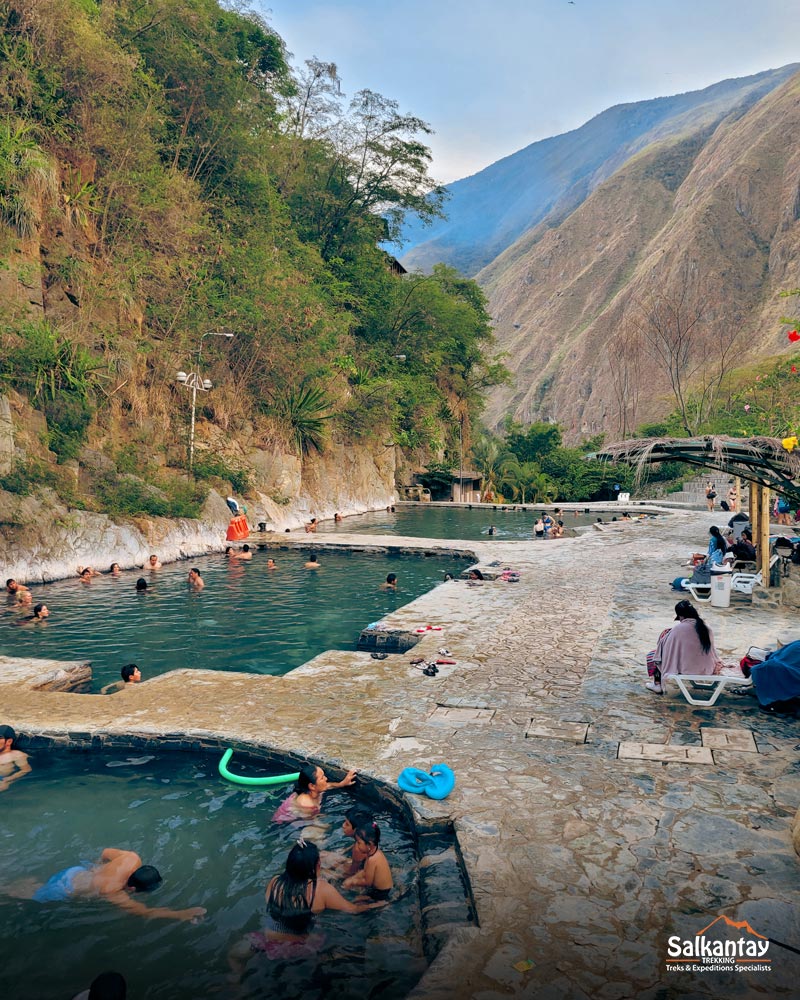

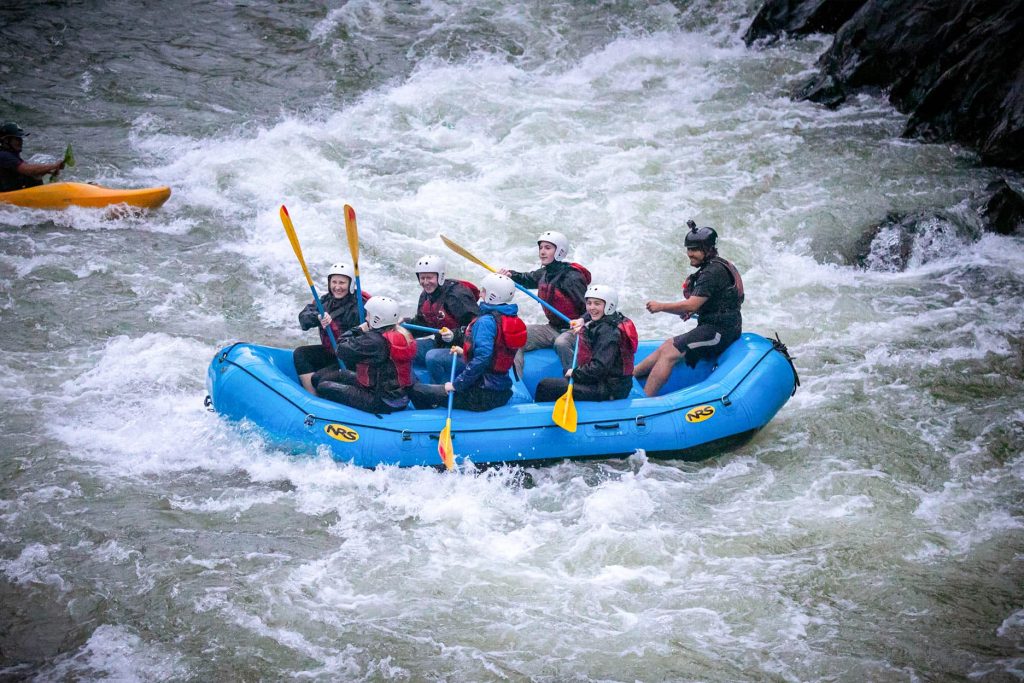
Inca Quarry: History and Ancestral Trails
If you’re looking for a unique and less-traveled route, the Inca Quarry Trail is an excellent choice. This path takes you through ancient Inca quarries, where massive stone blocks were extracted and shaped for the construction of temples and fortresses. Along the way, you’ll enjoy breathtaking views of the Andes and visit lesser-known but equally impressive archaeological sites. You’ll also reach Inti Punku, a gateway between earth and sky, offering stunning views of the Veronica snow-capped mountain. Plus, you’ll experience sleeping in the mountains under a starry sky, immersing yourself in the magic and serenity of nature.
A Journey Through Time: Discover the secrets of Inca architecture as you walk along trails surrounded by beautiful mountains. Every stone tells a story of effort, precision, and greatness.
En tu visita a Machu Picchu serás testigo de la asombrosa ingeniería inca. Verás cómo aquellas enormes rocas fueron transformadas en estructuras que han desafiado el paso del tiempo. Además, te sorprenderá el profundo conocimiento que los incas tenían sobre ingeniería y planificación urbana.
Description of the route
The Inca Quarry Trek lasts 4 days and offers a mix of challenging hikes, lesser-known archaeological sites, and landscapes you won’t find on other treks.
Day 1: Refresh Yourself at the Perolniyoc Waterfall and Explore the Racaypata Archaeological Site.
The adventure begins in Soqma, a small community where you’ll start the hike to the beautiful Perolniyoc Waterfall and the Racaypata archaeological site. Then, you’ll ascend to the campsite in Rayan, enjoying stunning views of the valley along the way.
| Difficulty | Moderate |
| Hiking Distance | 8 km / 4.97 miles |
| Hiking Duration | 5 – 6 hours |
| Minimum Altitude | 3.000 m / 9,843 feet |
| Maximum Altitude | 3,700 m / 12,139 feet |
Day 2: Feel Like a Guardian of the Mountains at Inti Punku (Sun Gate).
Conquering Peaks! On this day, you’ll hike to panoramic viewpoints overlooking the Sacred Valley and some of the highest surrounding mountains. From Inti Punku, you’ll feel like you’re floating among the clouds as you take in the breathtaking view of the towering Veronica snow-capped mountain right in front of you. Then, you will descend to the camp to rest.
| Difficulty | Moderate to Challenging |
| Hiking Distance | 13 km / 8.08 miles |
| Hiking Duration | 8 – 9 hours |
| Minimum Altitude | 3.600 m / 11,811 feet |
| Maximum Altitude | 4,500 m / 14,764 feet |
Day 3: Explore the Inca Quarries and Discover How They Carved Massive Stones with Astonishing Techniques.
You’ll explore the Cachicata Quarry, where the Incas extracted the massive stones used to build the town of Ollantaytambo. You’ll see partially carved stone blocks and learn about Inca construction techniques. You’ll also visit Ollantaytambo, one of the last living Inca towns. From there, you’ll take the train to Aguas Calientes, the gateway to Machu Picchu.
| Difficulty | Moderate |
| Hiking Distance | 9 km / 5.6 miles |
| Hiking Duration | 4 hours |
| Minimum Altitude | 2.040 m / 6,693 feet |
| Maximum Altitude | 3.600 m / 11,811 feet |
Day 4: Visit the Jewel of the Inca Empire – Walk Through the Stunning Ruins of Machu Picchu
The grand finale is spending a full day exploring the mystical citadel of Machu Picchu. Arrive with plenty of energy to walk through its terraces, temples, and plazas. Be amazed by the greatness of the Inca civilization before returning to Cusco.
| Difficulty | Easy – Moderate (depends on additional activities) |
| Hiking Duration | 2 to 5 hours (depends on additional activities) |
| Altitude of the Machu Picchu Citadel | 2,430 m / 7,972 feet |
| Optional Activities (Machu Picchu Mountains) | Moderate to Challenging (2-4 hours) |
| Maximum Altitude of Machu Picchu Mountain | 3,000 m / 9,843 feet |
| Maximum Altitude of Huayna Picchu Mountain | 2,720 m / 8,924 feet |
| Maximum Altitude of Huchuy Picchu Mountain | 2,497 m / 8,192 feet |
| Minimum Altitude | 1,800 m / 5,906 feet |
| Maximum Altitude | 2.800 m / 9,186 feet |
Rainy Season on the Inca Quarry Trek (Cantera Inca Trek)
The weather along the Inca Quarry route requires special attention, as it changes depending on altitude and season. This trail begins in high Andean areas and descends into more temperate environments in the valley. Below, you’ll find detailed information about the rainy season, its effects, and key tips for your trek.
Rainy Season
The rainy season in the Sacred Valley of the Incas, including the surroundings of Ollantaytambo, generally lasts from November to April. During this period, the trails can become slippery and more challenging due to mud and heavy rainfall.
During this season, daytime temperatures remain moderate, but humidity and cold increase! For example, in Cusco, temperatures range between 18–22 °C (64.4–71.6 °F) during the day, while nights can drop to around 5 °C (41 °F) or even lower. The combination of altitude, humidity, and muddy terrain makes the trek slightly more demanding, both physically and logistically.
Things to Keep in Mind:
- The trails may be muddy, slippery, or even flooded, so you’ll need to walk with caution.
- Vegetation reaches its peak: the landscape becomes lush and intensely green, offering stunning views but also higher humidity.
- Your packing list should include high-quality waterproof clothing, hiking boots with good grip, trekking poles, and dry clothes to change into at night.
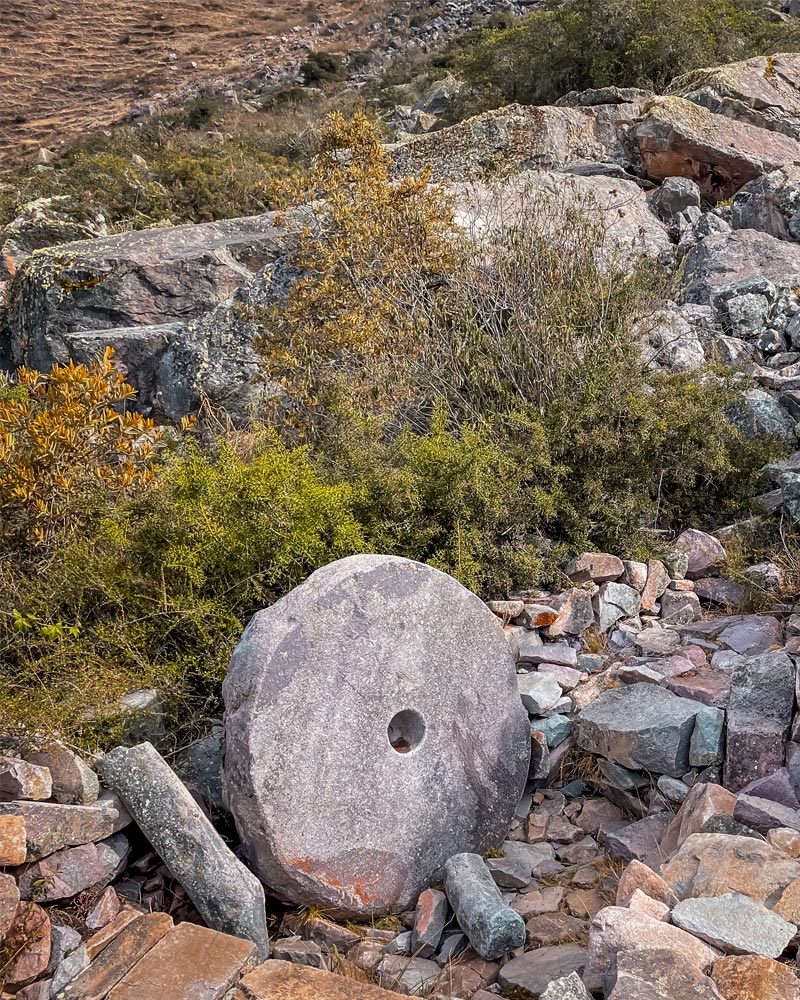

Lares: The Andes in Their Purest Form
If you are interested in Andean culture, the Lares Trail will captivate you. This trail is one of the least traveled in Cusco, but it is one of the best experiences you can have. It is a trek through idyllic Andean landscapes, offering breathtaking views of rivers, waterfalls, lagoons, and snow-capped mountain peaks. It is perfect for those who want to interact with local communities that still preserve their ancestral customs. During the hike, you will see shepherds with their llamas, women weaving colorful garments, and children greeting you with genuine smiles.
Authenticity in Every Step: More than just a hike, this is a cultural experience. Share moments with local families in Cusco’s communities, learn about their traditions, and enjoy Andean hospitality.
When you visit Machu Picchu, you will discover a landscape steeped in history and beauty. You can explore the incredible buildings while being guided through the ancient Inca citadel.
Description of the route
On the Lares Trek, you will discover the Andean way of life, getting to know local communities and their traditions.
Day 1: Relax in the Lares Hot Springs, Then Hike to the Pacchayoc Waterfall and Ascend to the Willkikasa Pass.
You will visit the thermal baths of Lares, where you will enjoy a relaxing moment and an energetic breakfast. Then, you will hike from the rural community of Cuncani, crossing the Pacchayoc waterfall and the Willkikasa pass at 4,400 m / 14,436 ft, before descending to the camp in Quiswarani. You will have the opportunity to meet and interact with the local community, enjoying dinner under the stars.
| Difficulty | Moderate |
| Hiking Distance | 7 km / 4.35 miles |
| Hiking Duration | 4 a 5 hours |
| Minimum Altitude | 3,800 m / 12,467 feet |
| Maximum Altitude | 4,400 m / 14,436 feet |
Day 2: Admire the Seven Waterfalls and Cross the Pachacutec Pass Before Meeting Local Communities.
The impressive Pachacutec Pass awaits you! This mountain, named after the powerful Inca emperor, stands at 4,700 m / 15,420 ft. You’ll ascend for four hours, enjoying breathtaking landscapes with lagoons and the Seven Waterfalls. After lunch along the way, you’ll continue to the village of Cancha Cancha, where you’ll meet the local community and learn about their traditional weaving.
| Difficulty | Challenging |
| Hiking Distance | 11 km / 6.84 miles |
| Hiking Duration | 7 a 8 hours |
| Minimum Altitude | 3,850 m / 12,631 feet |
| Maximum Altitude | 4,700 m / 15,420 feet |
Day 3: Visit the Maras Salt Mines, Stroll Through the Streets of Ollantaytambo, and Take the Train to Aguas Calientes.
You’ll descend for four hours, observing herds of llamas and alpacas while passing through Andean fields until you reach the village of Huaran, where you’ll have lunch. Taste the best salt in Peru! You’ll visit the Maras Salt Mines, a unique site with pink salt pools that have been used since pre-Inca times. Finally, you’ll explore Ollantaytambo before taking the evening train to Aguas Calientes, where you’ll get ready for the big day at Machu Picchu.
| Difficulty | Moderado |
| Hiking Distance | 9 km / 5.59 millas |
| Hiking Duration | 4 horas |
| Minimum Altitude | 2,040 m / 6,693 pies |
| Maximum Altitude | 3,950 m / 12,959 pies |
Day 4: Connect with the Past. Admire the Architecture and Mystery of Machu Picchu.
You will arrive at Machu Picchu early to enjoy its mystical atmosphere and explore its impressive structures on a guided tour. Then, if you have tickets, you can climb the mountains of Huayna Picchu, Huchuy Picchu, or Machu Picchu Mountain. Finally, you will travel by train to Ollantaytambo and by private transport to Cusco.
| Difficulty | Easy – Moderate (depends on additional activities) |
| Hiking Duration | 2 to 5 hours (depends on additional activities) |
| Altitude of the Machu Picchu Citadel | 2,430 m / 7,972 feet |
| Optional Activities (Machu Picchu Mountains) | Moderate to Challenging (2-4 hours) |
| Maximum Altitude of Machu Picchu Mountain | 3,000 m / 9,843 feet |
| Maximum Altitude of Huayna Picchu Mountain | 2,720 m / 8,924 feet |
| Maximum Altitude of Huchuy Picchu Mountain | 2,497 m / 8,192 feet |
| Minimum Altitude | 1,800 m / 5,906 feet |
| Maximum Altitude | 2.800 m / 9,186 feet |
Weather on the Lares Trek
Be well prepared, because the weather on the Lares Trek is unpredictable. The hike takes place at high elevations, ranging between 3,100 and 4,500 meters (10,170 to 14,764 feet), which causes rapid temperature changes.
Rainy Season
The rainy season in Lares lasts from November to April, bringing frequent downpours. During these months, the trails can become slippery and the campsites more humid, making the trek slightly more challenging. However, the vegetation becomes lush and the landscapes burst with vibrant colors, offering a beautifully “green” experience.
Typical Conditions and Practical Tips
During the rainy season, daytime temperatures range between 15 °C (59 °F) and 20 °C (68 °F). At night, especially at higher elevations, temperatures drop to between 0 °C (32 °F) and 5 °C (41 °F).
The trails may have mud, standing water, and occasional small landslides. Wear waterproof boots with good traction and use trekking poles for extra support.
Pack layered clothing: a breathable base layer, a warm mid-layer, and a waterproof outer shell. Also bring a hat and gloves for the cold nights.
Since the terrain can slow you down due to mud, consider starting your hike early and allowing extra time for possible delays.
If you’re looking for more comfort, consider hiking outside the rainy season (May–October), when the weather is more stable.
Inca Quarry and Lares are part of National Geographic’s exclusive list: The 6 Best Alternative Routes to Machu Picchu
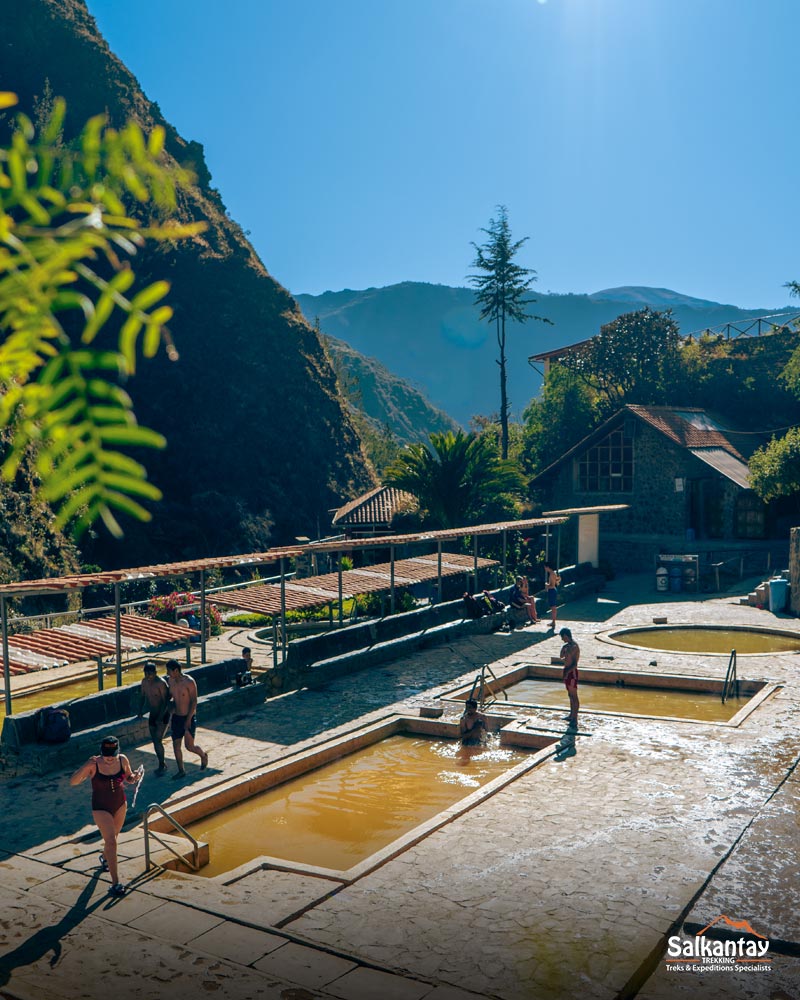

Ancascocha: Challenge and Natural Beauty
Considered one of the most challenging routes, the Ancascocha trek is perfect for those seeking a demanding hike with breathtaking landscapes. This trail will take you through remote valleys, towering mountains, and crystal-clear lagoons. The route crosses high mountain passes that will test your endurance, but every effort will be worth it when you reach natural viewpoints with unparalleled views of the mountain range. If you want to escape the conventional tourist routes, this trek is for you. You’ll explore less-traveled paths with stunning scenery and a unique connection with nature.
A Prestigious Route: National Geographic named it one of the 20 dream hikes to do around the world.
The journey culminates with a visit to Machu Picchu, an epic finale to an unforgettable trek. After days of exploring mountains, valleys, and ancient Inca trails, reaching the sacred citadel is the perfect reward—a grand ending to an adventure filled with history, culture, and exploration.
Description of the route
The Ancascocha route is a challenging 5-day trek that will reward your efforts with breathtaking scenery and unparalleled tranquility.
Day 1: Fill yourself with energy at the Perolniyoc waterfall and start learning about Inca history at Racaypata.
Your adventure will begin early in Soqma, where you will enjoy breakfast before starting the hike. You will visit the Perolniyoc waterfall and the Inca site of Racaypata, built on the side of a cliff. The history and natural beauty of the region will leave you in awe. After lunch in the mountains, you will descend to the campsite in Rayan, where you will spend the night under the starry sky.
| Difficulty | Moderate |
| Hiking Distance | 8 km / 4.9 miles |
| Hiking Duration | 5- 6 hours |
| Minimum Altitude | 3,000 m / 9,843 feet |
| Maximum Altitude | 3,700 m / 12,139 feet |
Day 2: A high-altitude challenge, conquering the Kuychiccasa Pass and admiring the views of the Sacred Valley.
You will start the day ascending to the Kuychiccasa Pass, where you will enjoy breathtaking landscapes and the chance to spot condors. Take it easy, climbing at a comfortable pace while admiring the view of the Verónica Glacier before descending to the Ancascocha community. You will spend the night at a campsite surrounded by a beautiful valley and a stream that will fill you with peace.
| Difficulty | Challenging |
| Hiking Distance | 14 km / 8.7 miles |
| Hiking Duration | 8-9 hours |
| Minimum Altitude | 3,700 m / 12,139 feet |
| Maximum Altitude | 4,500 m / 14,764 feet |
Day 3: Reach the highest point of the route at Huayanay Pass and discover the local community of Quesqa.
You will ascend to Huayanay Pass (4,650 m), enjoying breathtaking views of mountains, Inca ruins, and Ancascocha Lake. Afterward, you will descend to the community of Quesqa and the archaeological site of Paucarcancha, witnessing the vegetation change due to the significant altitude shift. You will end the day exploring Paucarcancha before settling into your campsite and enjoying a delicious dinner.
| Difficulty | Challenging |
| Hiking Distance | 14 km / 8.7 miles |
| Hiking Duration | 8 hours |
| Minimum Altitude | 3,900 m / 12,795 feet |
| Maximum Altitude | 4,650 m / 15,256 feet |
Day 4: You will walk along the Classic Inca Trail to Ollantaytambo, where you will board the train to Aguas Calientes.
This will be the lightest day of the trek, with a five-hour walk along the Classic Inca Trail towards KM 82, passing through small villages and the archaeological site of Llactapata. Then, you will travel by private transport to Ollantaytambo, where you will board the train to Aguas Calientes. Here, you can rest and regain energy for the exciting day ahead.
| Difficulty | Easy |
| Hiking Distance | 13 km / 8.08 miles |
| Hiking Duration | 5 hours |
| Minimum Altitude | 2,040 m / 6,693 feet |
| Maximum Altitude | 3,120 m / 10,236 feet |
Day 5: The big day has arrived – today, you will discover the mystical citadel of Machu Picchu.
As you pass through its gates, you will feel the unique energy of this ancient site. After a guided tour and free time to explore or climb an optional mountain, you will return to Aguas Calientes for lunch before beginning your journey back to Cusco, carrying unforgettable memories of this experience with you.
| Difficulty | Easy – Moderate (depends on additional activities) |
| Hiking Duration | 2 to 5 hours (depends on additional activities) |
| Altitude of the Machu Picchu Citadel | 2,430 m / 7,972 feet |
| Optional Activities (Machu Picchu Mountains) | Moderate to Challenging (2-4 hours) |
| Maximum Altitude of Machu Picchu Mountain | 3,000 m / 9,843 feet |
| Maximum Altitude of Huayna Picchu Mountain | 2,720 m / 8,924 feet |
| Maximum Altitude of Huchuy Picchu Mountain | 2,497 m / 8,192 feet |
| Minimum Altitude | 1,800 m / 5,906 feet |
| Maximum Altitude | 2.800 m / 9,186 feet |
Weather on the Ancascocha Trek
The weather in Ancascocha changes constantly due to the altitude — so you need to be well prepared! The route passes through cloud forests, high Andean zones, and glacier areas, where the weather can shift dramatically in an instant. It’s essential to carry the right gear and check the forecast before setting out.
The rainy season extends from November to April, when the terrain becomes more slippery. During these months, you can expect heavy rains, frequent fog, and demanding trails. Plan for longer walking times and possible delays.
During the dry season (May to October), the weather is more stable, with less rainfall and better visibility. However, in high-altitude areas, cold winds and sudden temperature changes can still occur. Bring a lightweight thermal layer and wind protection.
While rain dominates the wet season, the vegetation becomes lush and the landscape turns a vibrant green. However, the trails can become muddy and the steep passes more challenging. So, embrace the rain as part of the adventure—not an obstacle.
To make the most of your Ancascocha Trek, we recommend bringing a good poncho or waterproof jacket, shoes with strong grip, and trekking poles. Don’t forget to pack dry clothes for the night and avoid non-waterproof backpacks. With good preparation, you’ll fully enjoy both the challenge and the breathtaking scenery along the way!
If you prefer a slightly more relaxed adventure, you can take the 4-day Ancascocha trek. The landscapes are just as incredible, but at a slower pace.

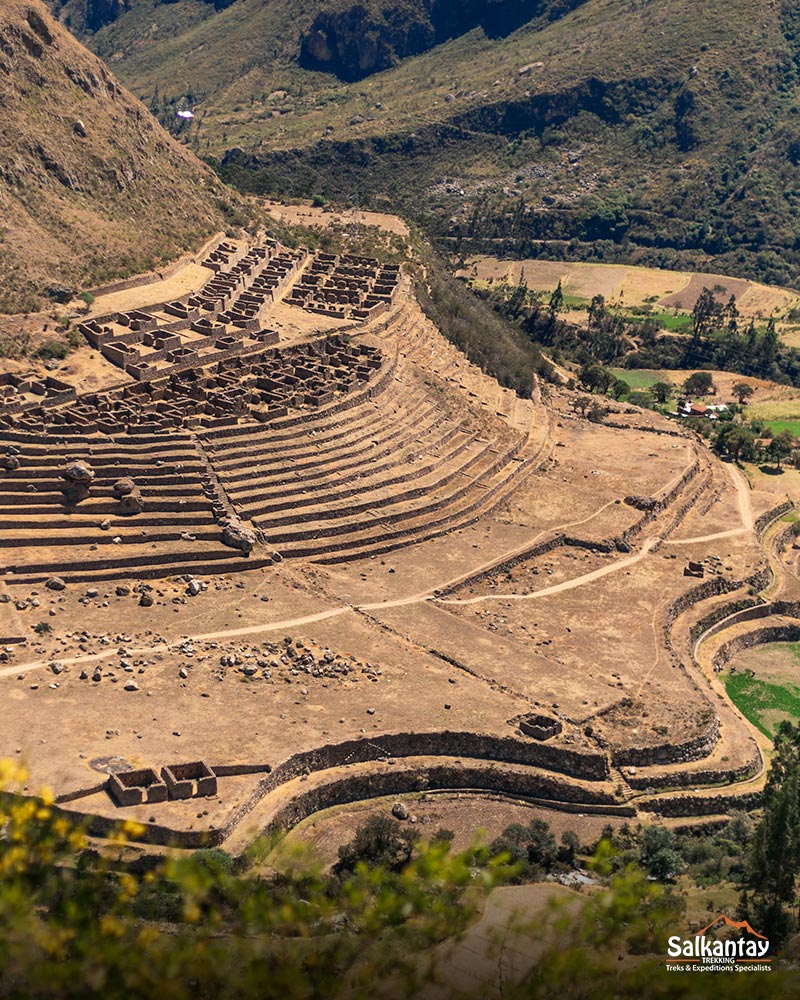
Huchuy Qosqo: A treasure of the Incas.
If you prefer a more relaxed journey but don’t want to miss out on the experience of an Andean hike, Huchuy Qosqo is the best alternative. This relatively short trail takes you to a hidden gem: the archaeological site of Huchuy Qosqo, an ancient Inca citadel with breathtaking views of the Sacred Valley. The route is perfect for those looking for a less demanding yet equally enriching experience.
Ideal for Travelers with Limited Time: Discover a lesser-known archaeological site with a fascinating history. Perfect for those who want a short hike with great visual rewards.
You will continue your journey to Machu Picchu, where Inca history will come to life before your eyes. As you walk through its imposing structures, you will gain a deeper understanding of the greatness of this civilization, whose legacy continues to amaze us to this day.
Description of the route
Huchuy Qosqo, in Quechua, means “Little Cusco.” This site was a minor but significant Inca settlement near Cusco, making it a historical and cultural point of interest in the region. Strategically located in the Sacred Valley, it is possible to reach Machu Picchu by trekking in just a few days.
Día 1: Almuerza delante de la Laguna de Qoricocha y duerme en el sitio arqueológico de Huchuy Qosqo.
The adventure begins at the Tambomachay site. You will pass through the Sicllacasa Pass before reaching Qoricocha Lagoon, where you will enjoy lunch by the lake. You will continue ascending to the highest point of the trek to take in stunning views of the surroundings. Then, you will descend for four hours through valleys and canyons until reaching the terraces of Huchuy Qosqo, where you will camp.
| Difficulty | Easy to Moderate |
| Hiking Distance | 118 km / 11.18 miles |
| Hiking Duration | 9 hours |
| Minimum Altitude | 3,800 m / 12,467 feet |
| Maximum Altitude | 4,200 m / 13,780 feet |
Day 2: Explore the Huchuy Qosqo site, stroll through Ollantaytambo, and admire the Andean landscape on the train to Aguas Calientes.
After breakfast at the campsite, you will explore the Huchuy Qosqo archaeological site in depth before descending to Lamay for lunch. Then, you will travel to Ollantaytambo, where you will stroll through its Inca streets and board the Vistadome train to Aguas Calientes. There, you will have free time to relax before dinner and rest for the big day at Machu Picchu.
| Difficulty | Moderate |
| Hiking Distance | 3 km / 1.86 miles |
| Hiking Duration | 2 hours |
| Minimum Altitude | 3,600 m / 11,811 feet |
| Maximum Altitude | 3,600 m / 11,808 feet |
Day 3: Witness the majesty of Machu Picchu, a hidden treasure among the clouds.
After an early breakfast, you will head to Machu Picchu to enjoy a guided tour of the citadel. If you booked in advance, you can climb Huayna Picchu, Huchuy Picchu, or Machu Picchu Mountain for breathtaking views. Then, you will return to Aguas Calientes for lunch before boarding the train to Ollantaytambo and continuing by private transport to Cusco, concluding your adventure.
| Difficulty | Easy – Moderate (depends on additional activities) |
| Hiking Duration | 2 to 5 hours (depends on additional activities) |
| Altitude of the Machu Picchu Citadel | 2,430 m / 7,972 feet |
| Optional Activities (Machu Picchu Mountains) | Moderate to Challenging (2-4 hours) |
| Maximum Altitude of Machu Picchu Mountain | 3,000 m / 9,843 feet |
| Maximum Altitude of Huayna Picchu Mountain | 2,720 m / 8,924 feet |
| Maximum Altitude of Huchuy Picchu Mountain | 2,497 m / 8,192 feet |
| Minimum Altitude | 1,800 m / 5,906 feet |
| Maximum Altitude | 2.800 m / 9,186 feet |
Weather on the Huchuy Qosqo Trek
Pay close attention to the weather on the Huchuy Qosqo route, as altitude and season make it variable. The trek takes you through humid forests and high Andean zones, where conditions can change rapidly. For that reason, bring multiple layers of clothing, a lightweight waterproof jacket, and protection against wind and humidity.
Rainy Season
The rainy season lasts from November to April, reaching its peak between January and March. During these months, the skies are often cloudy and rain is frequent, making the trails slippery. For example, daytime temperatures range between 12 and 20 °C (54 and 68 °F), while nighttime temperatures can drop to 0 °C (32 °F) or even lower in the highest areas.
Although the scenery becomes greener and more beautiful, the humidity and mud make the trek more physically demanding.
Typical Weather and Recommendations
During the dry season (May to October), the days usually offer mostly clear skies and pleasant temperatures between 18 °C and 24 °C (64 °F and 75 °F), though nighttime temperatures can fall to 0 °C (32 °F) or below.
During the rainy season, bring a waterproof jacket or poncho, water-resistant outer pants, shoes with good traction, and trekking poles for support.
Pack thermal clothing for cold nights, a hat, lightweight gloves, and a waterproof cover for your backpack.
If your priority is smoother hiking and more stable conditions, consider scheduling your trek during the transitional months such as April–May or September–October, when rainfall decreases and the weather is milder.
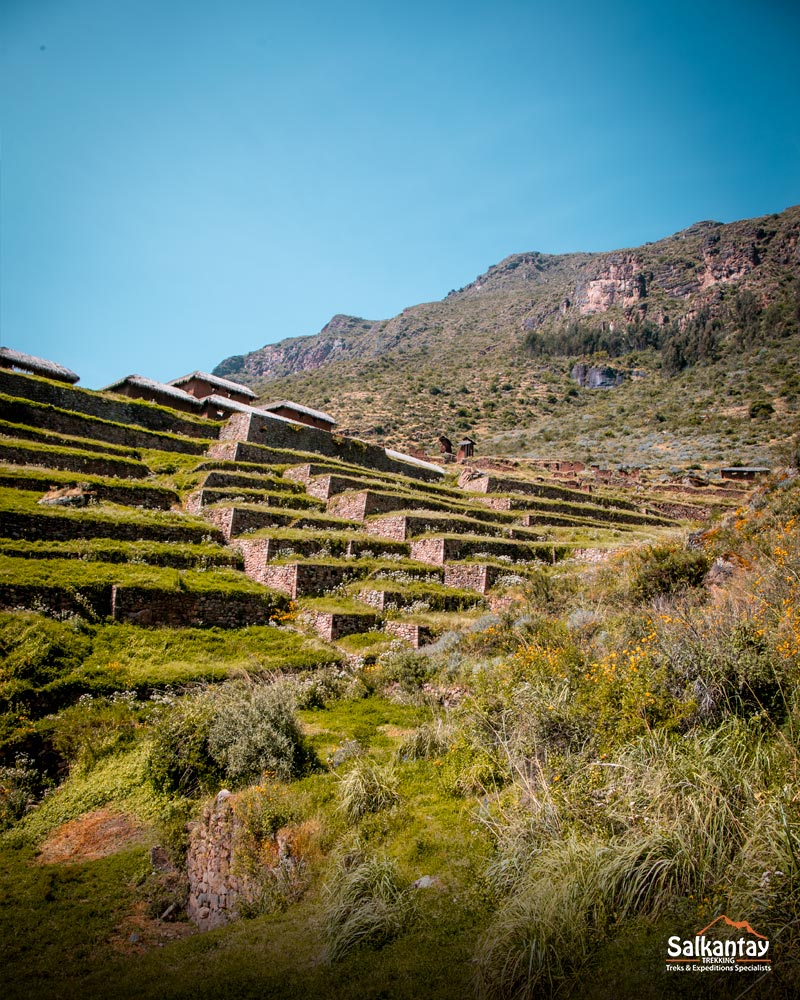
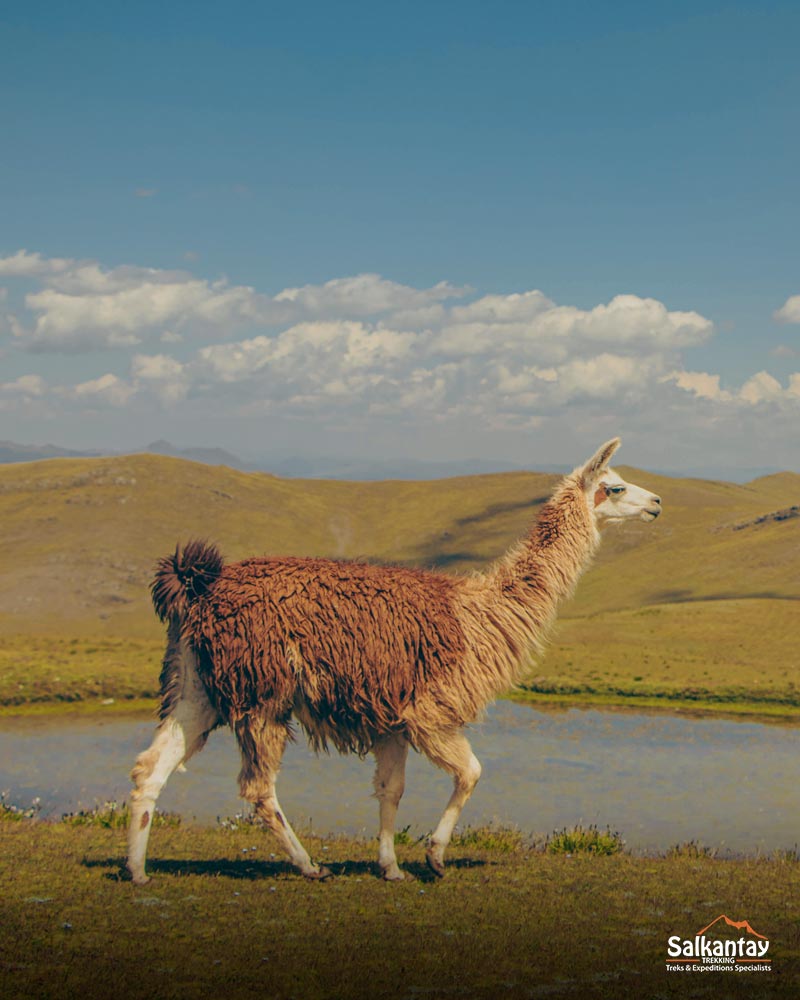
Choquequirao: The Hidden Jewel
If you’re passionate about Inca history and looking for an adventure off the beaten path, Choquequirao is a treasure that deserves a place on your list. Known as the sacred sister of Machu Picchu, this lost citadel nestled between the Andes and the jungle of Cusco preserves a mystical, silent atmosphere where time seems to have stopped. Its name means “Cradle of Gold” in Quechua, and its architectural grandeur reflects the perfection and spirituality of the Inca Empire.
Surrounded by towering mountains and located at more than 3,000 meters (9,842 feet) above sea level, Choquequirao offers an incomparable physical challenge — but also an intimate and profound experience for those who dare to discover it. Far from the crowds, each step is a connection to history, nature, and the adventurous spirit that defines the Andes.
An Unexplored Treasure: Discover an archaeological site as majestic as Machu Picchu, but far less visited. Hiking to Choquequirao is like reliving Inca greatness in solitude, surrounded by magical landscapes.
Route Description
The Choquequirao trek is one of the most rewarding challenges in Cusco. Over several days, you’ll walk through canyons, cross rivers, and ascend mountain trails with breathtaking views of the Apurímac Canyon. Each step brings you closer to Choquequirao, an Inca site full of mystery.
Day 1: Begin the Adventure — Descent into the Apurímac Canyon
The journey begins with a drive to Capuliyoc, the starting point of the trek. From here, you’ll enjoy spectacular views of the canyon and the snowcapped Padreyoc before descending toward Chiquisca, where you’ll spend your first night surrounded by pure nature.
| Difficulty | Moderately |
| Hiking Distance | 12 km / 7.45 miles |
| Approximate Duration | 6 hours |
| Maximum Altitude | 2,900 m / 9,514 ft |
| Minimum Altitude | 1,900 m / 6,233 ft |
Day 2: Challenging Ascent to the Choquequirao Citadel
This will be one of the most demanding days of the trek. You’ll cross the Apurímac River and begin a steep ascent toward Marampata. Upon arrival, you’ll be rewarded with panoramic views of the valley and the first glimpses of Choquequirao. In the afternoon, you’ll explore the agricultural terraces and the main site before resting for the night.
| Difficulty | Challenging |
| Hiking Distance | 13 km / 8.08 miles |
| Approximate Duration | 8 hours |
| Maximum Altitude | 3,050 m / 10,006 ft |
| Minimum Altitude | 1,550 m / 5,085 ft |
Day 3: Explore the “Sister of Machu Picchu”
You’ll dedicate the day to calmly exploring the ruins of Choquequirao. Walk among temples, stairways, canals, and terraces where the echoes of the past can still be felt. From the viewpoints, you’ll appreciate the vastness of the complex and, if you’re lucky, witness the majestic flight of Andean condors.
| Difficulty: | Moderate |
| Approximate Duration: | 5 hours of exploration |
| Altitude: | 3,050 m / 10,006 ft |
Day 4: Return through Mountains and Changing Landscapes
You’ll begin the return by descending again into the canyon to cross the Apurímac River, then ascending back toward Capuliyoc. The landscape will look completely different in the morning light, offering an unforgettable farewell to this epic journey.
| Difficulty | Challenging |
| Hiking Distance | 14 km / 8.7 miles |
| Approximate Duration | 7–8 hours |
| Maximum Altitude | 2,900 m / 9,514 ft |
| Minimum Altitude | 1,550 m / 5,085 ft |
Tips for Your Adventure
Acclimatization: Spend at least two days in Cusco before starting the trek.
Physical Preparation: Choquequirao requires endurance — train with long walks and uphill hikes before your trip.
Gear: Bring trekking poles, warm clothing, and a good sleeping bag. Nights can be cold, but the starry sky makes every effort worthwhile.
Choquequirao is more than a destination; it’s a transformative experience. Hiking toward it is a tribute to Inca history, the mountains, and the spirit of exploration that lives in every traveler.
Special Tip: If you have more time, you can extend your trek to Machu Picchu on an 8 day expedition, connecting two of the greatest jewels of the Inca legacy.
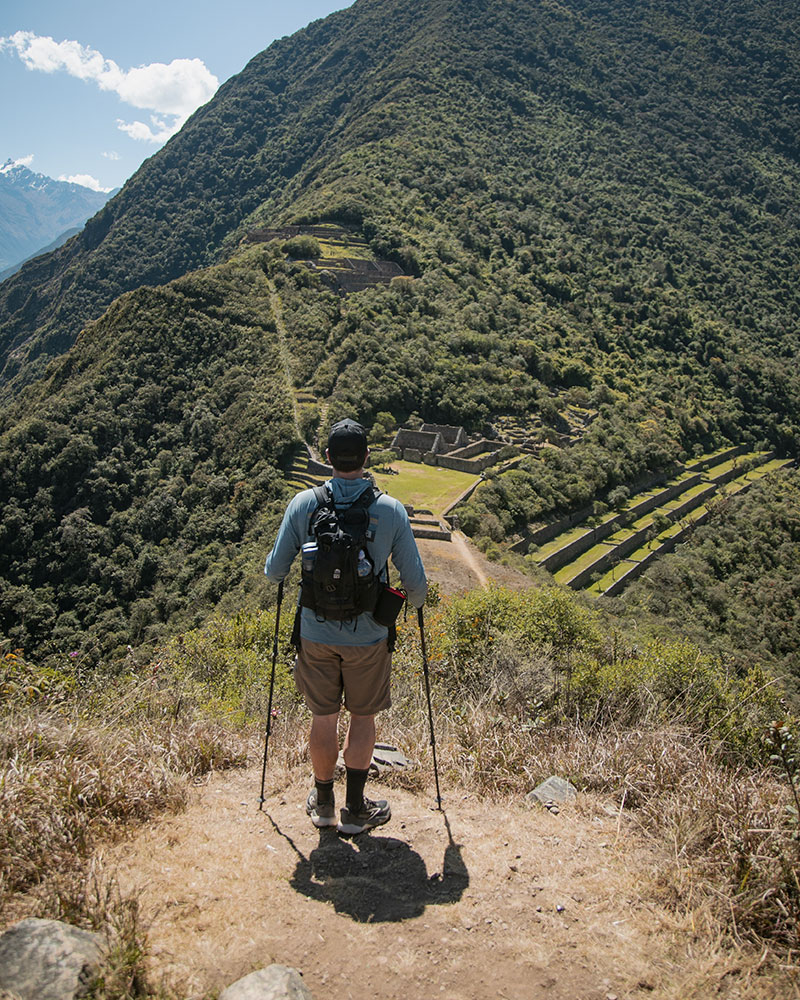

Tips for Choosing the Best Alternative
Before deciding which route to take, consider the following factors:
- Difficulty level: Determine your level of experience and physical condition. Some routes, like Ancascocha, require good physical fitness due to the altitude and duration of the hike. Others, like Huchuy Qosqo, are ideal if you prefer a more relaxed option. Do not underestimate the mountains and prepare accordingly.
- Trek duration: You can choose from short options to long journeys lasting several days. Consider your availability and time in Cusco to select the best option.
- Type of experience: Think about whether you prefer history, adventure, breathtaking landscapes, or fewer tourists. Cultural (Lares), Archaeological (Huchuy Qosqo), Adventure (Inca Jungle), Scenic (Inca Quarry and Ancascocha)
- Travel season: The time of year affects the difficulty of the routes. For example, during the rainy season, rafting in Inca Jungle is not feasible. However, this period is ideal for the Ancascocha trek, as the lagoons and waterfalls are at their peak.
Each alternative has its charm and advantages, so choosing the best one will depend on your preferences and needs. Whatever your choice, Machu Picchu will be an unforgettable experience!
Frequently Asked Questions About Alternative Routes
Do you have any doubts? Don’t worry, we’ll answer your questions so you can have a hassle-free trip.
Are the alternative routes more difficult or dangerous?
Not necessarily. Conventional routes like the Inca Trail or Salkantay also have considerable difficulty. It all depends on the altitude, trek duration, and your physical condition. Safety on all routes is guaranteed when traveling with Salkantay Trekking. Our equipment is top-quality, and our guides are highly trained in the routes and first aid in case of emergencies. They will always prioritize your safety.
Which is the easiest route to reach Machu Picchu by trek?
The Huchuy Qosqo route is considered the most accessible option for hikers looking for a shorter and less demanding alternative. Although it includes some ascents, it is a shorter hike and does not reach extreme altitudes, making it ideal for those who prefer a more relaxed experience before reaching Machu Picchu.
Which routes have fewer tourists?
If you’re looking for a quieter experience away from the crowds, the best options are the Ancascocha trek and the Lares Valley route. Both offer stunning landscapes, contact with local communities, and the opportunity to hike less-traveled trails compared to the classic Inca Trail.
What is the best time to do an alternative trek?
The best time to do any of the alternative routes is during the dry season, between May and October. During these months, weather conditions are more stable, with less chance of rain and clear skies that allow you to enjoy spectacular panoramic views. In addition, as these routes are less crowded, even in high season you can travel them without the crowds typical of the more popular trails. However, if you prefer to avoid the busiest seasons and enjoy green, lush landscapes, the months of April and November can be an excellent option.
Is a guide necessary for these trails?
It is recommended to do these routes with a certified guide, especially on poorly marked or hard-to-access trails. Besides ensuring safety, the guide will enhance the experience with historical and cultural insights, as well as knowledge about Andean flora and fauna. On routes like Lares or Ancascocha, where the terrain is more challenging, a guide is practically essential.
Can I do an alternative route if I’m not acclimated?
It is recommended to acclimate in Cusco. Spend at least two days in the city or another high-altitude location before starting any hike to avoid altitude sickness. It is also advised to stay well-hydrated, avoid heavy meals, and take altitude sickness pills if necessary.
Which is the best alternative route to Machu Picchu for an authentic cultural experience?
If you’re looking to connect with Andean communities and learn about their way of life, the Lares Trek is the best option. This route allows you to share moments with local families, learn about their traditions, and enjoy breathtaking natural scenery. It’s perfect for those who want a more human and cultural hike, as well as a different way to reach Machu Picchu.
Which alternative route to Machu Picchu offers the most adventure and extreme sports?
The Inca Jungle is ideal for adrenaline lovers. It combines mountain biking, rafting, hiking, and zip-lining, taking you from the Andean peaks to the tropical jungle. It’s a thrilling experience full of changing landscapes — perfect for those seeking a complete adventure before reaching the Inca citadel.
How much time is needed to complete an alternative route to Machu Picchu?
It depends on the trek you choose. Shorter routes like Huchuy Qosqo can be done in 2 or 3 days, while longer and more challenging ones like Ancascocha or Inca Quarry take between 4 and 5 days. All of them end at Machu Picchu, so you can choose based on your available time and experience level.
Why choose an alternative route instead of the Classic Inca Trail?
Alternative routes are an excellent choice if there’s no availability on the Classic Inca Trail or if you prefer a more peaceful and personalized experience. They allow you to enjoy equally stunning landscapes, experience the authenticity of local communities, and explore lesser-traveled Inca paths — without the limitations of daily permit quotas.
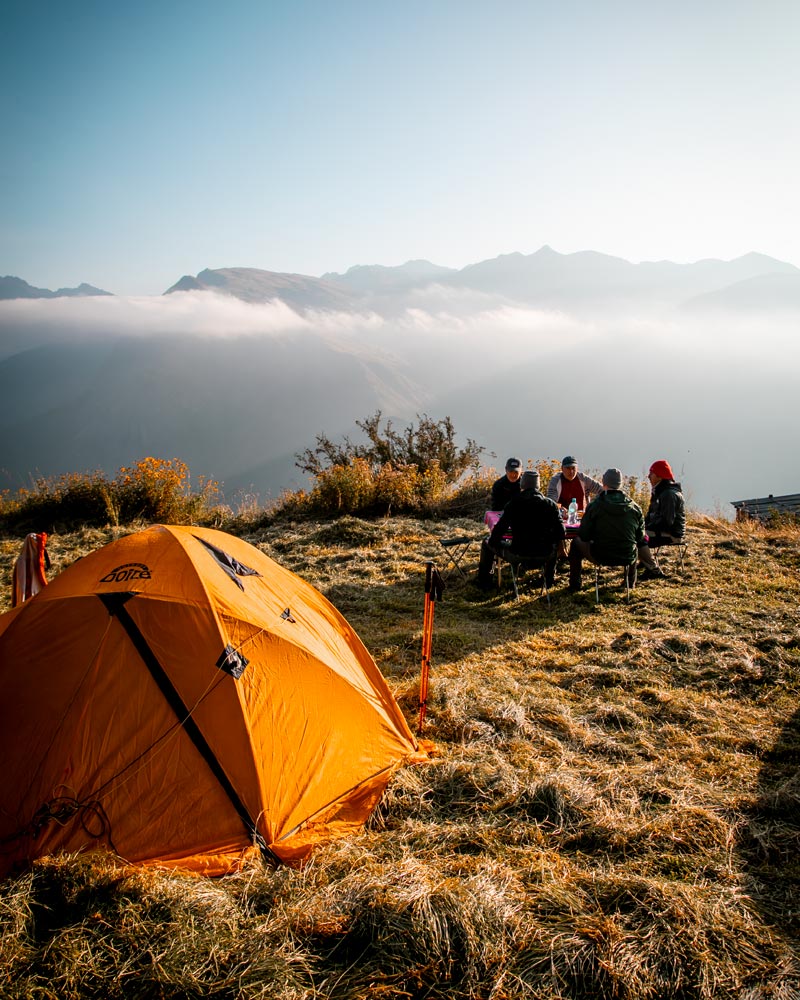
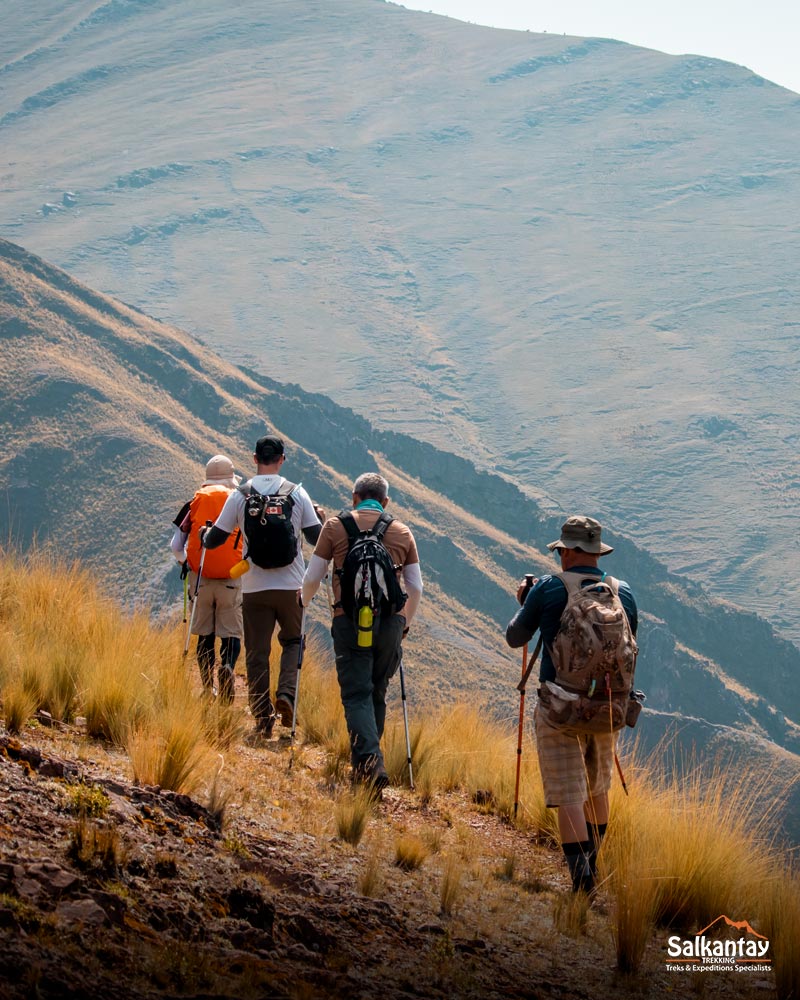
¡Start your Trip!
The alternative routes to Machu Picchu offer a unique and authentic experience for those seeking adventure, contact with nature, and a deeper connection with Andean culture. Whatever your choice, good planning, acclimatization, and preparation will ensure an unforgettable journey.
Step outside the box and explore fascinating trails on your way to the Inca citadel with Salkantay Trekking!
You Might Be Interested In:
- How to Acclimate in Cusco: Everything You Need to Know
- Safety and Hygiene for Hiking in Cusco
- The Ultimate Travel Guide to Machu Picchu
- Machu Picchu Mountains: Huayna Picchu, Huchuy Picchu, and Machu Picchu Mountain.
- Machu Picchu Tickets: Everything You Need to Know!
- The Best Time to Visit Machu Picchu
- The 7 Best Treks to Machu Picchu
- Adventure at Altitude! How to Train to Fully Enjoy Trekking in Peru


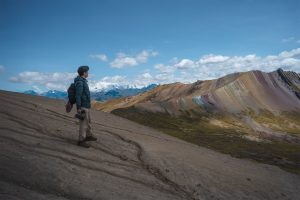
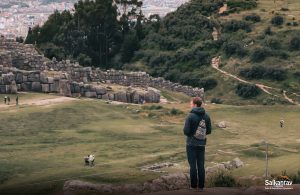
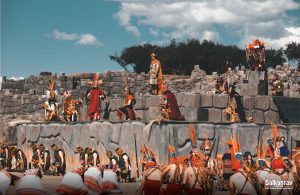
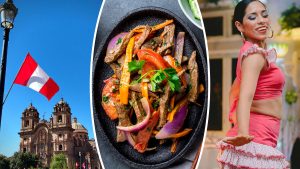

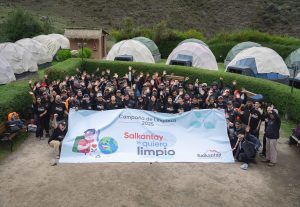


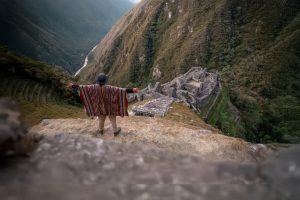
Leave A Reply